Sorted by date Results 26 - 50 of 344
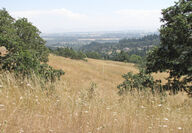
Western Oregon gardens and landscapes can flourish without summer irrigation - when you choose the right plants. Drought-tolerant plants include Oregon natives from summer-dry upland sites, as well as flora from Mediterranean regions of the world. The benefits of growing plants without supplemental irrigation include saving money on an irrigation system and water, as well as the environmental benefits of conserving water. Up to 30% of yearly household water use is estimated to be used for...
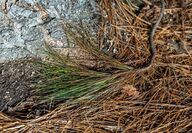
Reality can get skewed when there are so many sources of information - books, magazines, newspapers, nurseries, and, most of all, the internet and social media open up lots of room for contradiction. So, how do you find the right answer to gardening questions? Experts from Oregon State University Extension Service stepped up to bust some common gardening myths. Read on to get some research-based answers to 10 common misconceptions. For additional questions, call the OSU Extension Master...
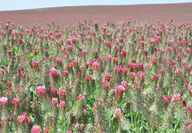
No one wants to go through the winter with no clothes, not even the soil that grows our plants. So jacket up the soil in cover crops. If you’re not acquainted with cover crops, here’s the rundown: These hardworking plants can add organic matter and aerate the soil, protect it from compaction caused by rain, suppress weeds, and reduce erosion – some even add nitrogen to the soil, according to Brooke Edmunds, an Oregon State University Extension Service horticulturist. “They’re nice,” she said. ...
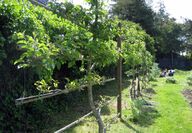
Espaliered trees bring fruit down to eye level. They allow for easy picking and take advantage of small spaces. But don’t kid yourself into thinking espaliers are any easier than regular-sized trees, said Cody Copp, an Oregon State University’s Extension Service horticulturist. “Espalier is one of many ways to prune – or design -- a fruit tree,” he said. “It’s beautiful, it doesn’t take up a lot of room in the yard. There are a lot of reasons to do it, but it takes dedication and time. It’s like...
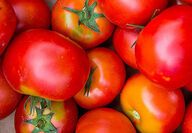
Knowing the whys and hows of tomato diseases gives gardeners a leg up for successfully growing the most treasured of vegetables. Brooke Edmunds, a horticulturist with Oregon State University Extension Service, troubleshoots the following common problems that might afflict your tomatoes as the season goes on. Blossom drop – It’s usually caused by dry soil and dry winds, but also may be caused by a sudden cold spell, heavy rain, or too much nitrogen. Usually, not all blossoms will fall off, and...
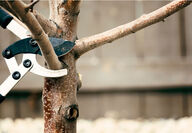
Gardens are beginning to flourish with brightly colored flowers, honeybees are buzzing, and birds are delighting neighborhoods with their unique tunes. This time of year, gardening is at the top of the minds of many Oregonians. But for those who have trees on their properties, or are looking to plant trees, it can be intimidating and overwhelming to figure out where to start and how to best care for trees. Have no fear though — three of Oregon’s experts are here to help you find your con...
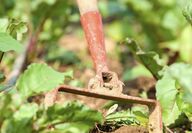
They float in the wind, get shaken off pets and wildlife, travel the world stuck to luggage or clothes, and hitch rides by plane, ship, train, truck, and car. Invasive weeds enter backyards in multiple ways and can cause havoc once they are there. “With some of these weeds, you have to fight them forever,” said Ed Peachey, a weed specialist for Oregon State University Extension Service. “Many times, it’s more a process of controlling them rather than eradicating them.” Peachey said the first...

If your goal is a nice lawn, leave clippings on the grass when you mow. It’s easier, feeds the grass, and leads to a better-looking and healthier lawn. Unless you’ve let the lawn grow excessively long, or the clippings are in thick clumps, grass clippings are a good source of nutrients. Leaving clippings helps save fertilizer costs and thereby prevents ground and surface water contamination. “Our research has shown that we can cut the fertilizer application rate almost in half when we retur...

If you have a good strong trellis, are a bit of a gambler, and have a love of kiwifruit, there’s no reason not to grow your crop. As vigorous as they are, though, don’t expect to plop these vines into the ground and stand back. There are three types of kiwifruit, Davis explained, the most common being the fuzzy kiwifruit (Actinidia deliciosa) available at the grocery store, usually the cultivar called ‘Hayward.’ Joining the lineup are hardy kiwifruit (A. arguta); and kolomikta or arctic kiwifru...
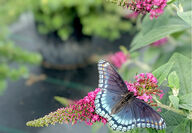
Saying that the Butterfly bush (Buddleia) is a magnet for pollinators is an understatement. It’s no wonder that The National Garden Bureau has declared 2024 the year of the Buddleia. In Oregon, Buddleia davidii was taken off the market in 2008 because of its invasive nature, but the Oregon Department of Agriculture has approved varieties for sale in Oregon that are seedless. The seedless forms have common names like Summer Lilac, Nectar Bush, Seedless Buddleia, or Seedless Butterfly Bush, accord...
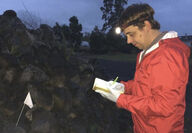
New research from the Oregon State University Extension Service found that slugs and snails are strongly attracted to bread dough. This discovery could lead to better ways of controlling these severe pests in agriculture, nurseries, and home gardens. Since the beginning of recorded history, slugs have ravaged crops and today are responsible for billions of dollars in damage – including between $60-$100 million to Oregon’s valuable grass seed industry alone, according to Rory Mc Donnell, ass...

Embarking on the journey of planting a garden can be a significant milestone, a testament to the home you’ve created, even if it’s a rented house or apartment. Your new space can transform into a canvas for container, vegetable, or ornamental gardening, a testament to your green thumb and creativity. Many rental homes have witnessed the birth of passionate gardeners. Despite the temporary nature of their living arrangements, people strive to infuse their space with a personal touch, and for man...

The COVID-19 pandemic inspired millions to grow vegetables, but many don’t have room for traditional gardening. Don’t let a lack of yard space keep you from gardening this spring and summer. Many vegetables grow well on patios, porches, balconies, or windowsill containers. According to Brooke Edmunds, an Oregon State University Extension Service horticulturist, small spaces make it hard to grow some of the larger vegetables. For instance, growing corn on a balcony may not be practical. But a w...
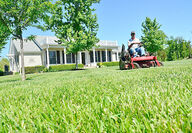
Continued From Last Week Rototilling Assuming your existing soil is acceptable for planting your new lawn, the first step normally is rototilling (Figure 1). Rototilling serves two basic functions. First, it loosens the soil to a depth of 6 to 8 inches. Second, it breaks up the soil into smaller pieces so it can be graded. With those two purposes in mind, it is clear that you need to go over the site only enough times to achieve the depth you want and a clod size you can grade. A common mistake...

Planting a new lawn or renovating an old one can be very frustrating experience if you’ve never done it before. The key to avoiding frustration is to understand the process well enough to be able to make the right decision. This publication will take you through the steps needed to successfully plant a new lawn or renovate an old one. If you follow these steps, you will get it right the first time! Seasonal timing In general, the best time to plant a lawn from seed is when temperatures are favor...

Herbs include some of the easiest plants to grow. In addition to culinary uses, herbs offer fragrance, oils that deter pests and flowers that support pollinators. While a few herbs are hardy enough to be perennial in cooler climates such as in the Klamath Basin, others will be annuals in those areas, to be enjoyed primarily in the warm months. Some tender herbs can be overwintered indoors, but the results are often disappointing, especially when attempted without supplemental lighting. Most...

Not every yard is suited for in-the-ground gardening. Sometimes containers or raised beds are better options. In rental situations or areas with poor or thin soil, garden space must sometimes be “created.” Internet articles often make both sound incredibly easy, possibly because the content creators were gardening in a different climate. Like many horticultural dilemmas, no one answer fits every situation. Considering the pros and cons from a variety of gardening perspectives may help the ind...

Reality can get skewed when there are so many sources of information – books, magazines, newspapers, nurseries, and, most of all, the internet and social media open up lots of room for contradiction. So, how do you find the right answer to gardening questions? Nine experts from Oregon State University Extension Service stepped up to bust some common gardening myths. Read on to get some research-based answers to 10 common misconceptions. MYTH: You should top a tree to control its height. R...

Growing asparagus requires patience—from planting to harvest, it takes two to three years—but the wait is well worth the reward. Homegrown asparagus is one of the earliest vegetables of spring. Its quality is much better than store-bought spears and less expensive. Once established, this vegetable is easy to grow. And asparagus is beautiful. A member of the lily family, its fern-like foliage turns from green to gold in fall and can be a backdrop to chrysanthemums or other late-season flo...

American robins are a favorite harbinger of spring, but most people take this ubiquitous Oregon native for granted. Though still abundant, robins are declining in urban settings and could use some help from homeowners. Oregon State University Extension Service wildlife experts encourage Oregonians to learn about these underappreciated native birds. They’ve developed the following information to help people foster robins in their landscape. * Robins (Turdus migratorius) seen in the winter months...

When it comes to picking gardening tools, there’s one rule that rises to the top. “You pay for what you get,” said Cindy Jeffers, manager of Landsystems Nursery in Bend. “There are a lot of tools out there that are inexpensive, but you get what you pay for when you buy quality tools,” she said. “Shop for quality rather than quantity,” said OSU Master Gardener Priscilla Robinson, who presented at a recent seminar. “Metal parts should be made of hardened steel or aluminum. These materials stay...

Himalayan blackberry has become a common weed that chokes out native vegetation from Northern California to British Columbia. Blackberries are well adapted to our region – a single blackberry plant can grow into a six-square-yard thicket in less than two years. Blackberries keep popping up because of their tremendous and effective dispersal potential," said Brooke Edmunds, Oregon State University Extension Service horticulturist. "Blackberry canes can produce hundreds of berries, each full of s...

Change is inevitable. Whether we like it or not, change is constantly with us and the nurseries are no exception. Sometimes the change can be a step forward with the result either creating a better environment or perhaps the change could be keeping a business, like a garden center, alive. We, as gardeners, have very little, if any, input into these matters and can only hope that the change will be beneficial for our gardening needs. Several years ago, Joy Creek Nursery, a specialty nursery in...

In the early 2000s, I was very much involved in gardening, both my own and visiting other gardens, but I did not know olive trees being planted in Oregon. Not only were they not seen in local gardens, but they were also not readily available in local garden centers. Olive trees were considered a Mediterranean plant that could grow in California and Arizona, but not in Oregon. Our winters were too cold and too wet — those were the commonly heard objections. My opinion on growing olive trees in O...

Some houseplants seem unhappy no matter how much care and nurturing they get from their owners. Often, our homes do not provide the preferred environment — bright light and high humidity. Many plants have growth cycles attuned to day length and slow down during winter — even with artificial light. As with people, understanding the particular needs of some plants contributes to the difference between thriving and merely existing. Phalaenopsis orchid Beautiful, long-blooming and affordable in rec...